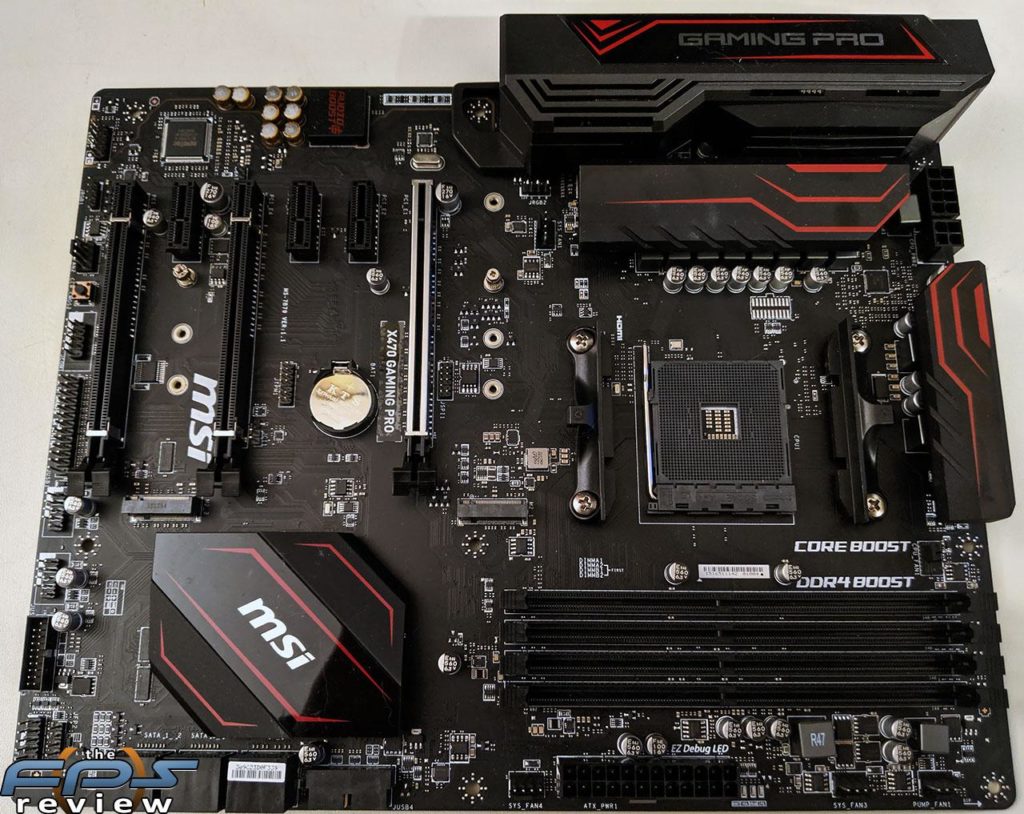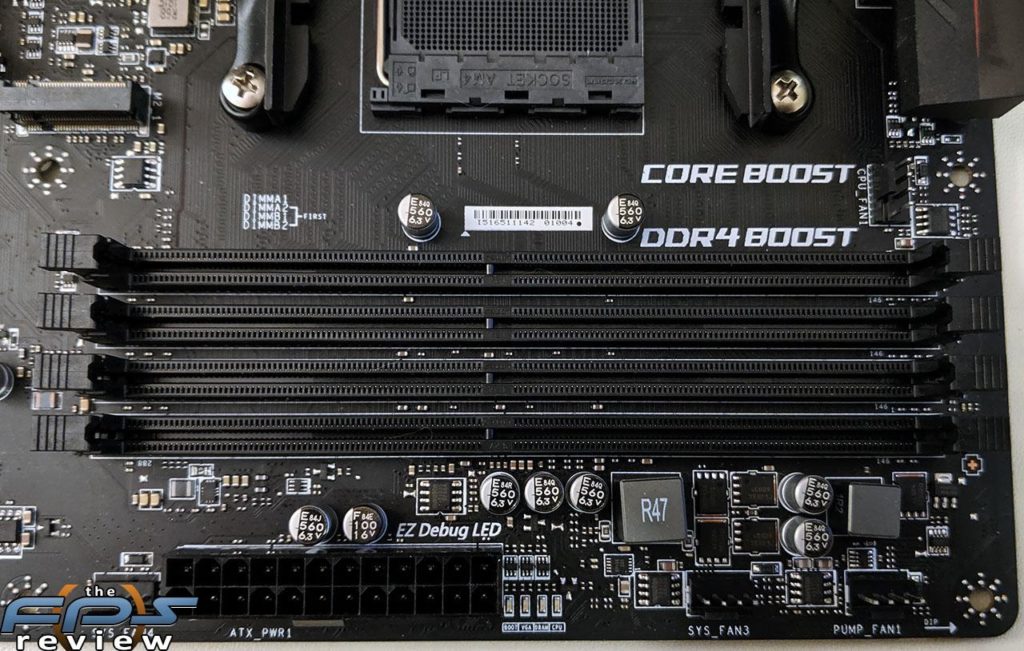Packaging
The packaging for the MSI X470 Gaming Pro is relatively basic. The box art is the usual red and black themed aesthetic designed to appeal to gamers specifically. I suppose that’s the reason for the race car art on the front of the box. The board is protected by a cardboard insert and anti-static bag. There isn’t exactly a lavish accessory bundle. However, you get everything you would expect for getting your build going. Inside the package you’ll find the following accessories: User manual, driver disc, SATA cable labels, I/O shield, SATA cables and M.2 screws. Obviously, you need to provide a CPU, PSU, etc. to make a full working system.
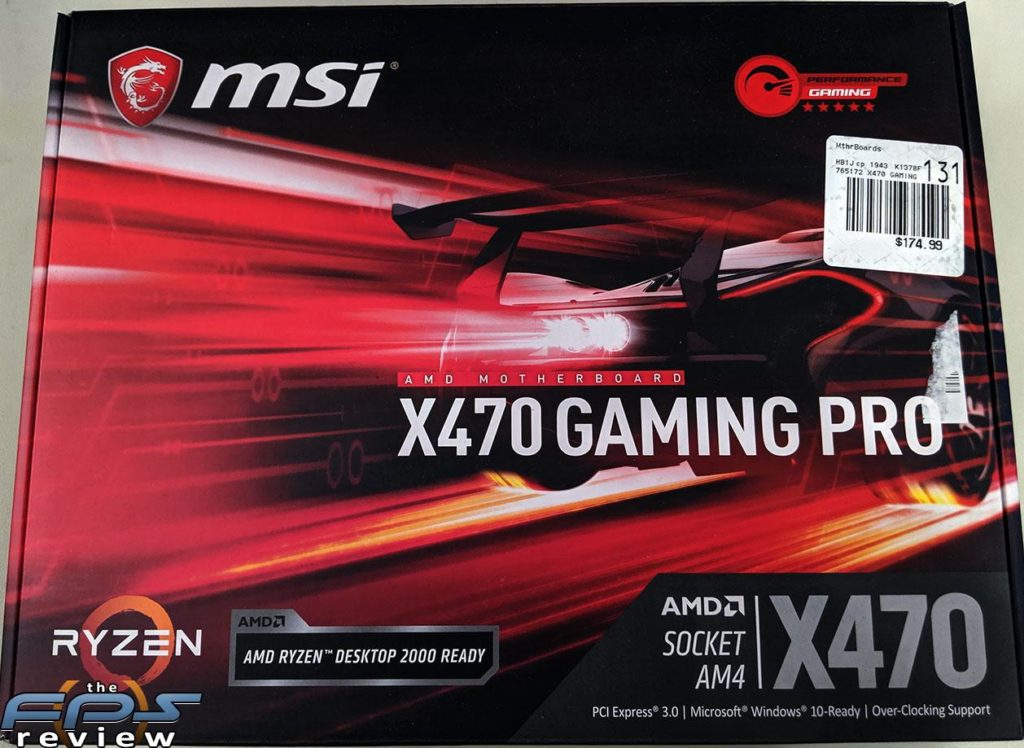
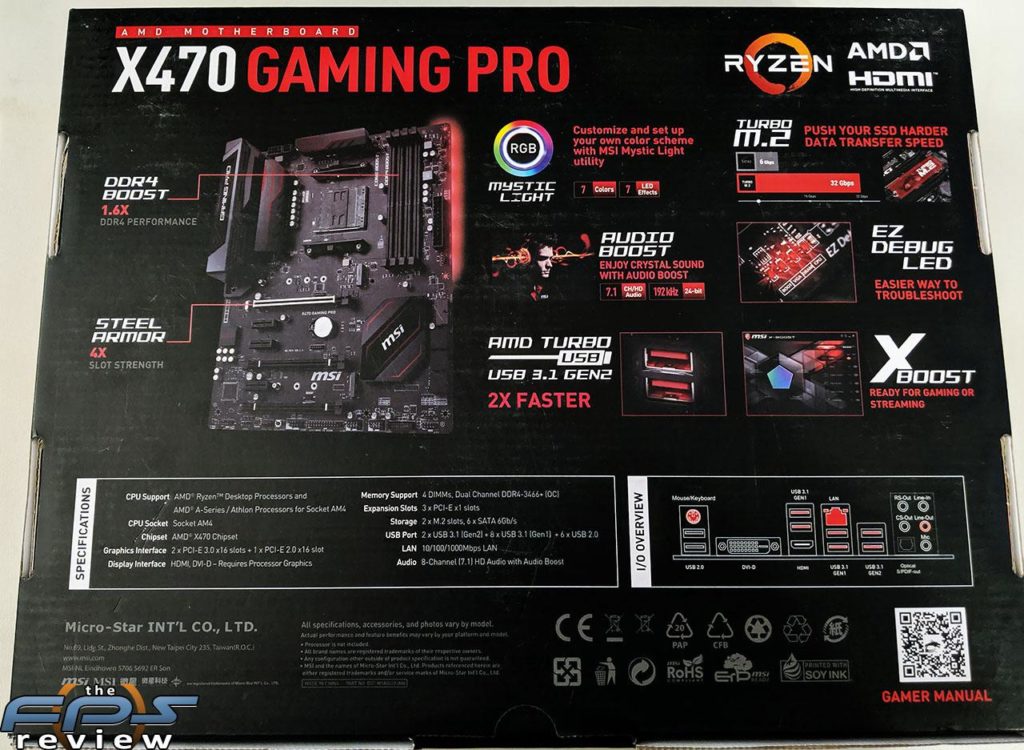


Motherboard Layout
The MSI X470 Gaming Pro has an excellent layout. There are no significant problem areas or anything I would feel the need to change were the layout up to me. The CMOS battery location isn’t great, but it’s a worthwhile trade off to have the M.2 slot located where it is. There are 4x 4-pin fan headers, 1x water pump header and a dedicated CPU fan connector. The fan headers all support DC and PWM control modes. For the most part, the various ports and headers have been labeled for easy identification. The major exception is with the front panel header which is cryptically labeled at best.

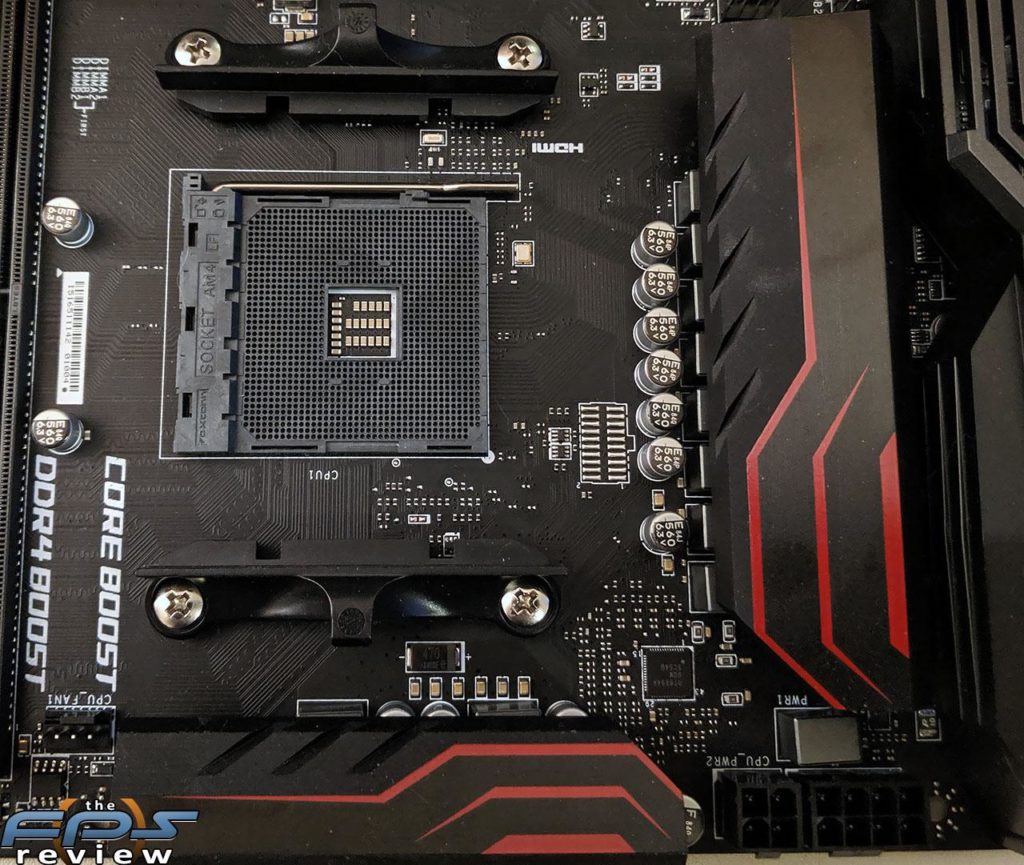
The CPU socket area is clear of any obstructions. The MOSFET cooling hardware sports a simple yet elegant black and red color scheme. The coolers are secured to the motherboard via mounting screws instead of plastic push pins. Contact with components appears to be solid. The VRM’s appear to be an 8+2 phase power solution using a standard phase doubler.
There are four 288-pin DDR4 memory slots which utilize double sided locking tabs for memory retention. The slots are not color coded to denote proper dual channel memory mode operation. These slots support memory speeds up to DDR4 3466MHz through overclocking and memory modules totaling 64GB. Directly in front of the memory slots you’ll find the 24 pin ATX power connector and dual fan headers. One of these is the dedicated 2 amp water pump header for water cooling enthusiasts. It also works with AIO cooling solutions such as the ones made by Corsair and others.
One thing you may have noticed are the diagnostic LED’s next to the ATX power connector. This is part of the EZ Debug LED feature. Unfortunately, there isn’t an actual LCD post code display, so you have the PC computing equivalent of idiot lights in a car. These are obviously not as robust for error reporting, but they get the job done.
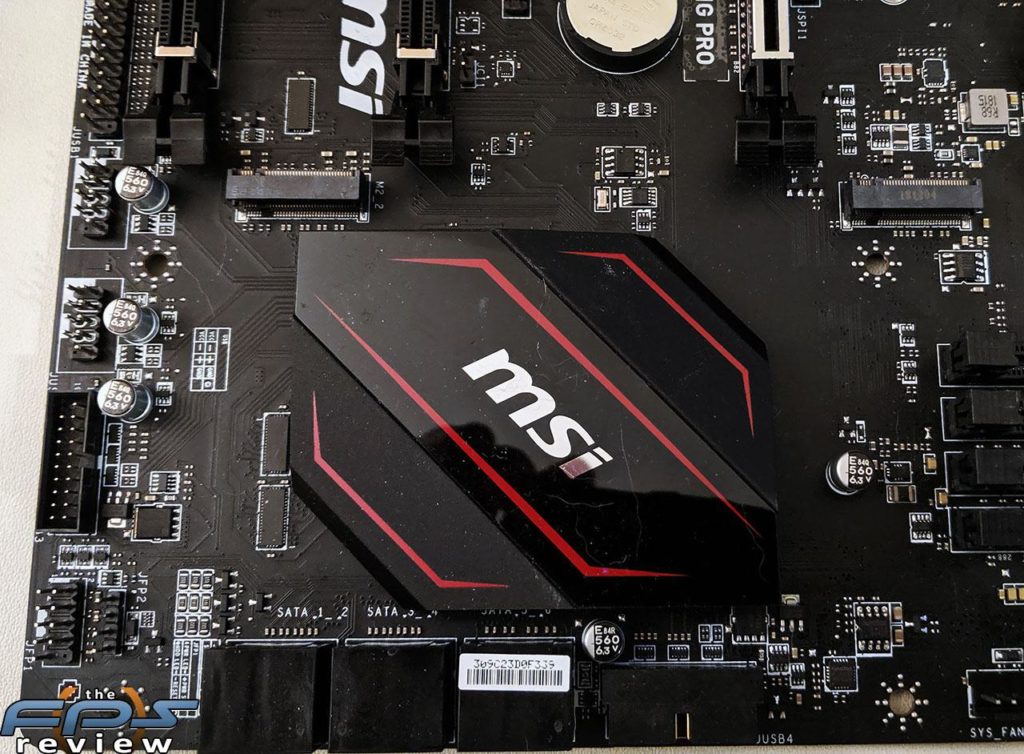
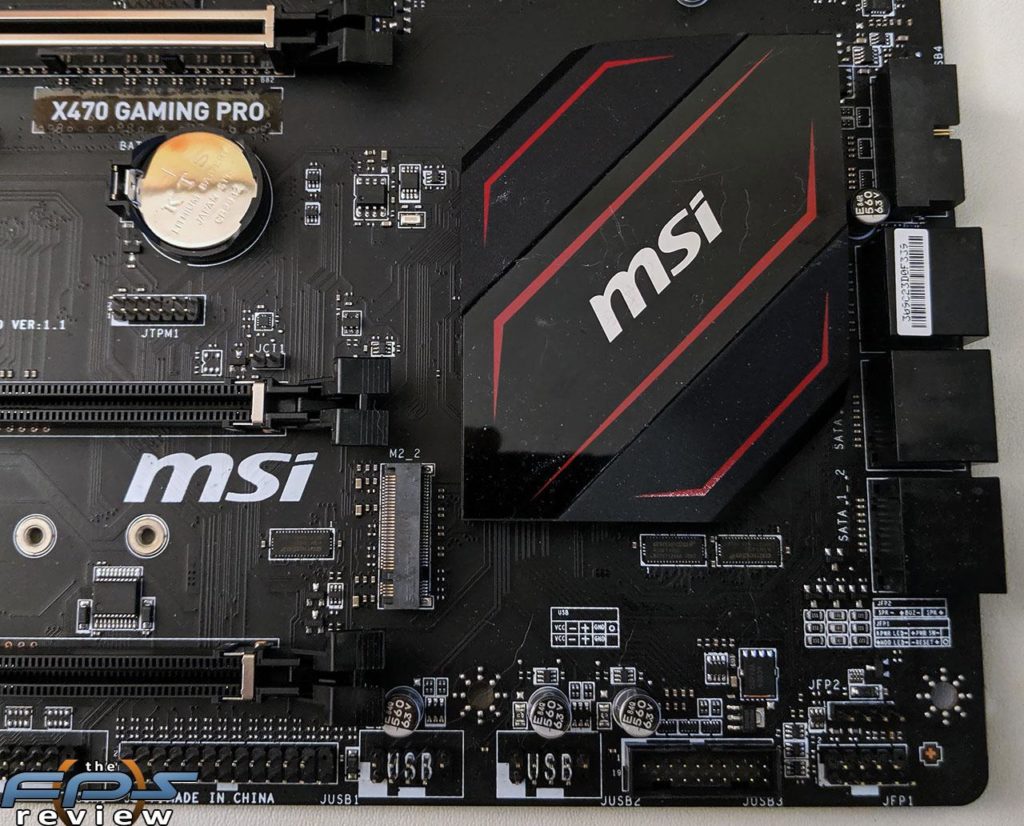
The chipset is cooled by a passive heat sink featuring the same black and red aesthetic of the MOSFET coolers. The low-profile design prevents clearance problems with expansion cards. This cooler is also secured to the mainboard through screws. In front of the heat sink there are 6 SATA III 6Gb/s ports, and a USB 3.0 header. The chipset cooler itself is unremarkable.
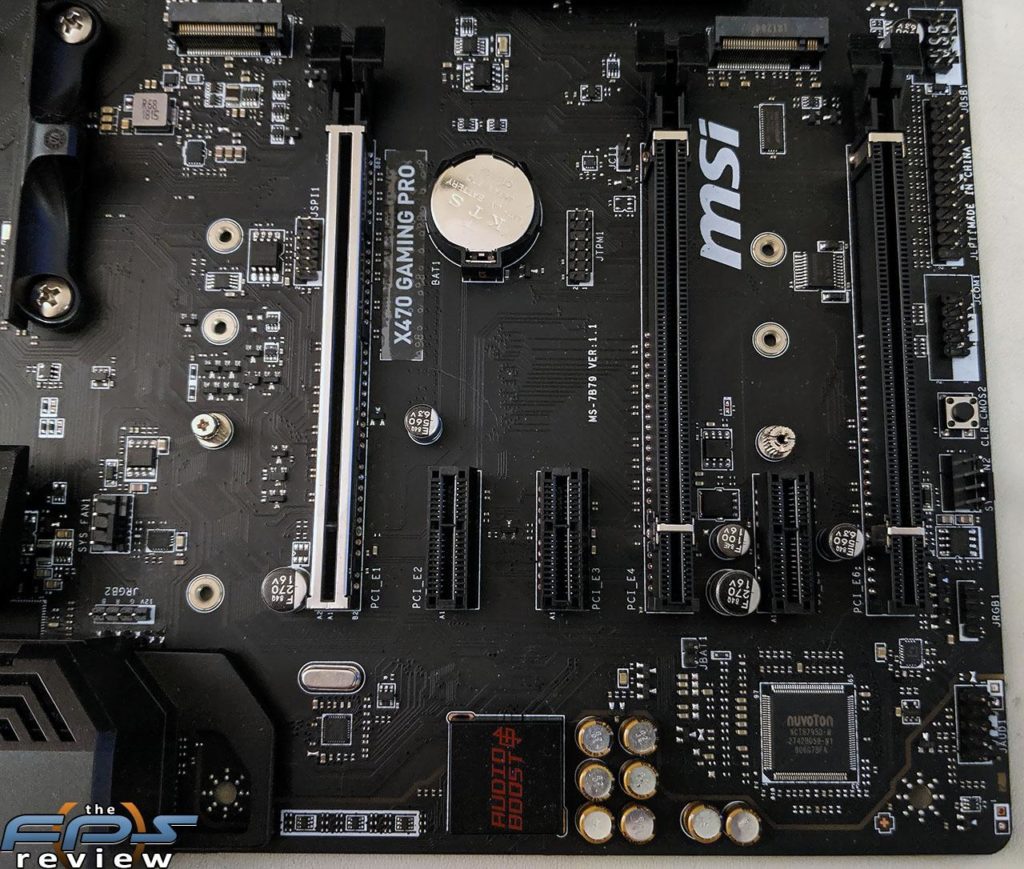
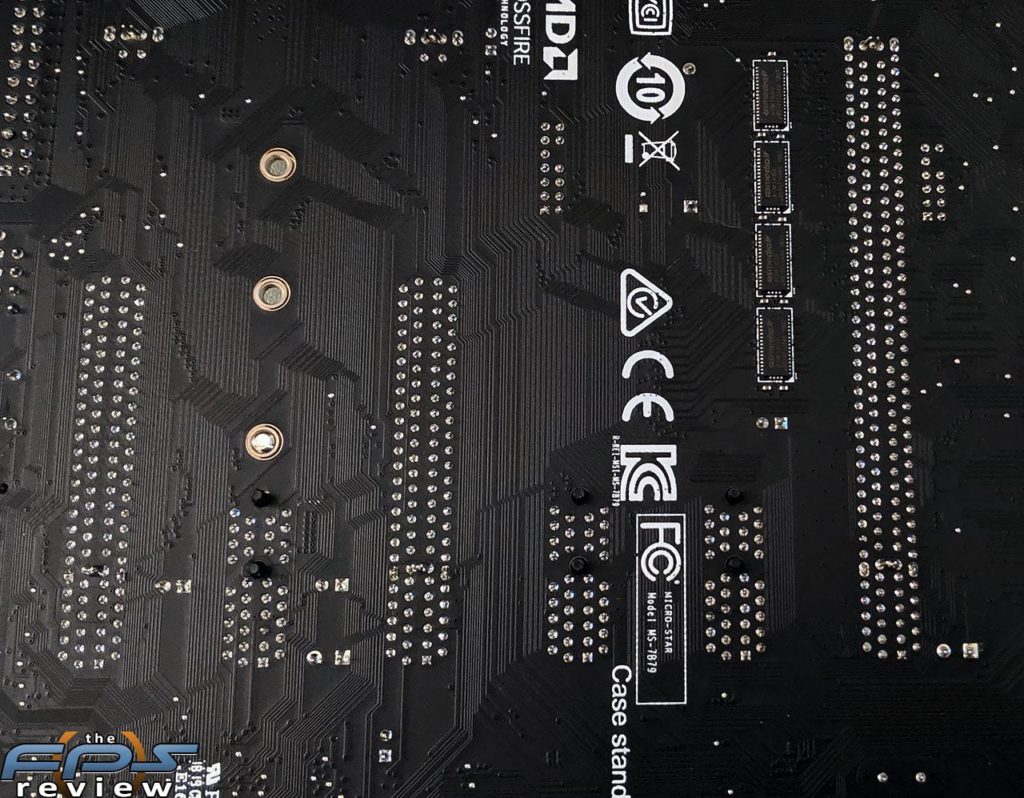
The expansion slot area has an excellent layout. The top PCIe slot is a little lower than it could be to accommodate a type 22110 M.2 slot. This is one of the most ideal locations for an M.2 slot as it keeps the drive from being placed directly under the GPU. The primary PCIe x16 slot is reinforced with MSI’s steel armor. This slot is reinforced for graphics card retention and to prevent things like plate bending and sheering. Dual PCIe x1 slots are placed underneath the primary PCIe slot. The slot placement is ideal for larger graphics cards which can take up to 3x expansion slots. This covers up the PCIe 3.0 x1 slots, but these are rarely used anyway. There are two additional PCIe x16 slots, which are x8 and x4 electrically. A final PCIe 3.0 x1 slot is placed between them. For multi-GPU users, only Crossfire is an option here. 2-Way and 3-Way configurations are supported. The slot configuration yields an x16/0 or x8/x8/x4 configuration for GPU’s.
The second M.2 slot is a type 2280 (80mm) slot. There are no fancy heat sink covers or plastic cladding around any of these. The second M.2 slot is also located between the two PCIe x16 (x8/x4) slots.

Sadly, MSI doesn’t use an integrated I/O shield. I don’t expect that in this price point, but I’m rather fond of them for several reasons. On the back panel, there are two USB 2.0 ports, 4x USB 3.1 ports, There is a single HDMI port and 1x DVI port. The DVI port is an odd choice, but below $200, this isn’t terribly surprising. D-Sub connectors were retained far longer than they should have been for emerging markets.

